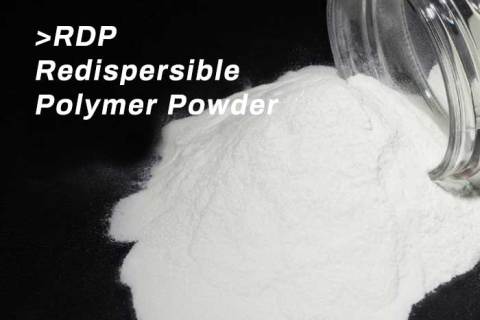
- Home
- >
News
Redispersible Polymer Powder (RDP) is a vital additive that enhances dry mix mortar performance in construction. As a spray-dried polymer, RDP improves polymer mortar properties like adhesion and flexibility. This article explores RDP’s role in mortar and its benefits.
Mortar is a cornerstone of construction, used in tile adhesion, plastering, and self-leveling floors. However, traditional mortar often struggles with bonding strength, flexibility, and water resistance. RDP (Redispersible Polymer Powder), a spray-dried polymer emulsion, transforms mortar by enhancing its performance.
Redispersible Polymer Powder (RDP) is the game-changer your construction business needs. Whether you’re manufacturing tile adhesives, self-leveling compounds, or waterproof mortars, integrating high-quality RDP into your mix will dramatically enhance strength, workability, and long-term durability.
RDP is a type of polymer material commonly used in dry powder mixtures in the construction industry. It has good water solubility and redispersibility, allowing it to form a uniform polymer film when mixed with water, enhancing the performance of construction materials.
Due to the low softening point, ordinary polycarboxylate superplasticizers cannot be powdered by spray drying. Molecular design to increase softening point without losing water-reducing performance yields high-content powdered polymers.
Redispersible Polymer Powder (RDP) is a free-flowing, white powder produced by spray-drying polymer emulsions, typically based on vinyl acetate and ethylene copolymers. When mixed with water, RDP reverts to its original emulsion state, enhancing the properties of construction materials.
In the construction and building materials industry, the choice of adhesives and additives directly influences the performance and quality of the final product. If you are looking for a solution that can significantly enhance the adhesion, flexibility, and durability of materials, our VAE Redispersible Polymer Powder is your ideal choice.
Are you still searching for a material that can meet your diverse needs? Polyvinyl Chloride Paste Resins, with their excellent performance and wide range of applications, open up new horizons in materials for you. They are no longer just raw materials, but a blank canvas full of infinite possibilities, waiting for you to paint with your creativity.
Redispersible Polymer Powder (RDP) is a dry powder made from the spray-drying of polymer emulsions, primarily used to enhance the performance of cement-based and gypsum-based mortars. RDP particles can re-disperse and restore their original properties when mixed with water. Various types of RDP are available on the market, such as vinyl acetate-ethylene copolymer powder, catering to different construction needs.
Forget focusing solely on steel and concrete! Behind the scenes of modern construction, a crucial material is quietly playing a significant role: PCE Powder (Polycarboxylate Ether Superplasticizer). It may not be as visually prominent as concrete or as robust as steel, but with its unique "invisible strength," PCE Powder empowers construction with limitless possibilities and achieves superior quality.
The construction industry has always been a realm that seeks innovation and progress. As consumers demand higher performance from building materials, Redispersible Polymer Powder (RDP) has emerged as a key enabler in upgrading construction materials, thanks to its exceptional capabilities.
VAE-RDP is a redispersible polymer powder made from a vinyl acetate and ethylene copolymer. It is commonly used in construction materials such as tile adhesives, plasters, and dry-mix mortars to enhance flexibility, adhesion, and water resistance.












